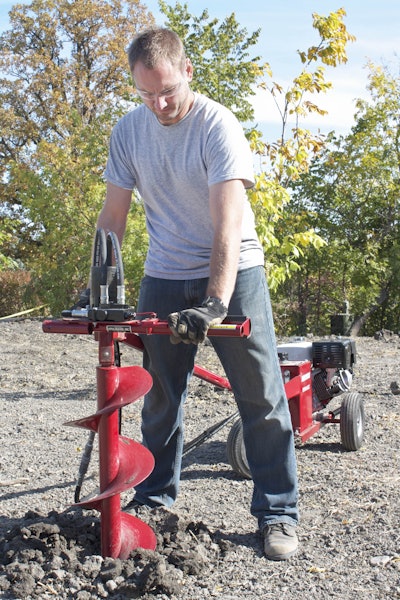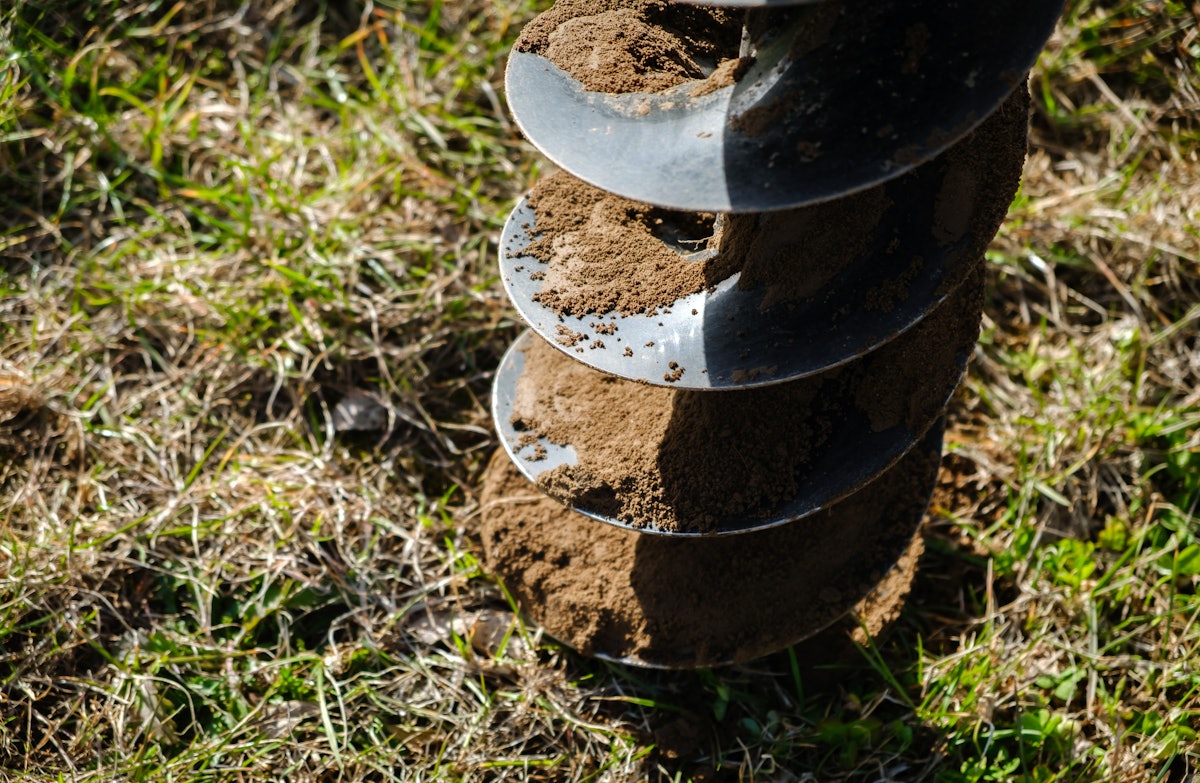When it comes to operating a powerful earth drill, safety is key. Helping rental customers understand and implement safety measures can reduce the risk of injuries and help ensure a smooth, efficient digging process.
From preparing the worksite and checking equipment to following proper operational procedures, here are key steps to help them maximize safety for earth drilling jobs.
1. Don’t Dig Dangerously
The first step in any digging project is to know the worksite and prepare accordingly. To keep crews safe, advise customers to always call 811 at least 48 hours before digging to have underground utilities marked, whether those are underground sprinklers, sewer pipes, transmission cables or something else entirely. Buried gas lines or power lines are the most dangerous, with the potential for electrocution, fire, severe burns or even fatalities.
Ensure operators know to allow an adequate amount of space around underground obstacles when planning where to dig. The general rule of thumb is a radius of 2-3 ft. around a marked area. Once utilities are mapped out, it’s time to get the crew ready.
2. Gear Up
Remind your customers to make sure that operators wear appropriate personal protective equipment (PPE) and follow basic dress code practices when operating an earth auger. This includes putting on work boots or quality athletic shoes, avoiding loose clothing and hanging shoelaces that can get caught in the auger, and wearing safety goggles and work gloves whenever the earth drill is running to protect against flying debris. Then, it’s time to check the drill.
3. Know the Drill
Recommend that rental operators become familiar with the earth drill’s owner’s manual before operating it. Even if they’ve operated other drills, different brands have different safety features and practices.
Some earth drills are designed to take the guesswork out of safe operation. Look for a machine with a chassis-mounted drill carriage and a torque tube that transfers kickback to the chassis instead of the operator for increased safety. If it’s a hydraulic-based drill, check for a pressure relief valve that automatically stops the auger’s rotation and halts the drill before it reaches a dangerous overload point.
Before sending a machine out for a rental, conduct a complete inspection of the auger and the drill for any repairs or maintenance needs — and show the operator how to do the same. Be sure the kill switches and wires are undamaged, the throttle works, the engine starts and that all bolts are tightened properly. Just as importantly, inspect the auger, points and blades to make sure they’re properly aligned and connected. A misalignment can cause the auger to vibrate or “walk.
Operators should make sure to check all the machine’s fluids and change or refill the fluids as needed before starting a job. Remind them that trying to do this while the machine is hot can result in serious injuries from accidentally touching a hot engine or hydraulic power deck. If it has to be done in the middle of a project, let the drill cool completely first. Check the instruction manual for other specific tips, such as how to check a torque tube for proper connection. These procedures might be different between one model and another, so follow any steps outlined in the manual.  A machine with a chassis-mounted drill carriage and a torque tube transfers kickback to the chassis instead of the operator for increased safety.Little Beaver Inc.
A machine with a chassis-mounted drill carriage and a torque tube transfers kickback to the chassis instead of the operator for increased safety.Little Beaver Inc.
4. Dig Smart, Stay Safe
Once the auger is set up and running, operators should position it perpendicular to the ground. For greater control, they should adjust the downward pressure based on soil conditions. For soft soil, ease up a little. If the ground is harder, apply more pressure. If the auger hits a tree root or hard spot during drilling, operators should turn off the machine and disconnect the handle from the auger, then turn the auger counterclockwise to free the unit.
When the drill has reached the desired depth, it’s time to release the throttle control and allow the auger to come to a complete stop before removing it from the hole. Slow and steady is the key to safe posthole digging. Running an auger at a slower speed helps operators gain comfort and control and, as a result, reduces the likelihood of injuries.
Safety doesn’t begin or end with the machine. The rental center and operator both have roles to ensure the crews are being safe throughout each project. With a strong commitment to safety, everyone can go home injury-free after a job well done.
View the original article and our Inspiration here


Leave a Reply